MARTINSBURG, W.Va. — Inside a windowless office in a nondescript brick building, a lone man is staring at three computer screens while typing out lines of code.
He’s among a group of developers and coders who aid federal agents responsible for tracking down the owners of guns used in crimes across the United States. But these computer experts use their talents not to modernize the gun shop records that pour into this facility, the National Tracing Center operated by the Bureau of Alcohol, Tobacco, Firearms and Explosives, or ATF. They are in fact doing the opposite: converting the digital files into screenshots akin to paper records so they cannot be searched electronically.
“It’s just insanity to think this is how we’re operating,” said Edgar Domenech, a former ATF deputy director.
Federal agents can run scans on things such as license plates and fingerprints to instantly find out who they belong to. But when it comes to guns, they’re essentially handcuffed by a 1986 law that keeps the ATF stuck in the past.
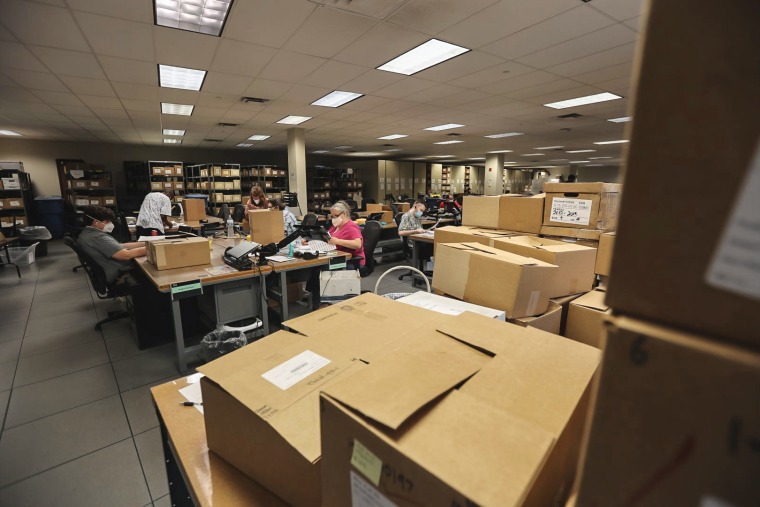
The nearly 40-year-old regulations prevent the agency from keeping searchable, digitized gun transaction records. And efforts in Congress to modernize the system have failed.
Boxes upon boxes of paper records fill nearly every corridor of the ATF’s tracing facility. The space was so cluttered that the agency brought in 40 cargo shipping containers, which sit outside the building, each filled with up to 2,000 boxes.
Today, the situation is more dire than ever. It takes 12 to 14 days for the ATF to perform a routine trace on a gun used in a shooting, robbery or other crime. The record wait time is due to a confluence of factors: shootings are up in cities across the country, ATF staff numbers are down, and more police agencies are seeking assistance in tracking the owners of firearms used in crimes.
“We are continually asked to do more, with less,” Neil Troppman, a program manager at the National Tracing Center, said after a tour of the facility earlier this summer.
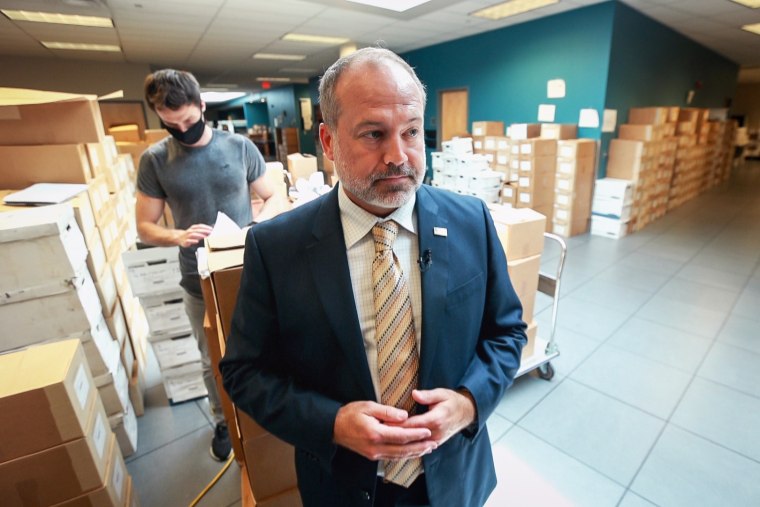
The recent mass shootings in Buffalo, New York, and Uvalde, Texas, have renewed attention on the ATF’s archaic system for tracing guns. But the bipartisan gun legislation signed into law in June doesn’t include any measures to modernize the nation’s only gun tracing facility.
Congress remains divided over expanding the capabilities of the ATF. Senate Democrats sponsored a bill last year that would allow the agency to keep a gun tracing database to aid law enforcement, but it went nowhere.
Republicans have long argued that allowing police access to an electronically searchable repository of gun records is tantamount to a nationwide firearm registry, which would make it easy for the government to seize people’s weapons. In April, 18 GOP senators signed a resolution opposing Biden administration regulations that will require gun dealers to retain their entire history of transaction records.
Only two of the 18 responded to an NBC News request for comment.
Sen. Mike Braun, R-Ind., suggested in a brief interview that he was open to the idea of allowing the ATF to create searchable electronic databases.
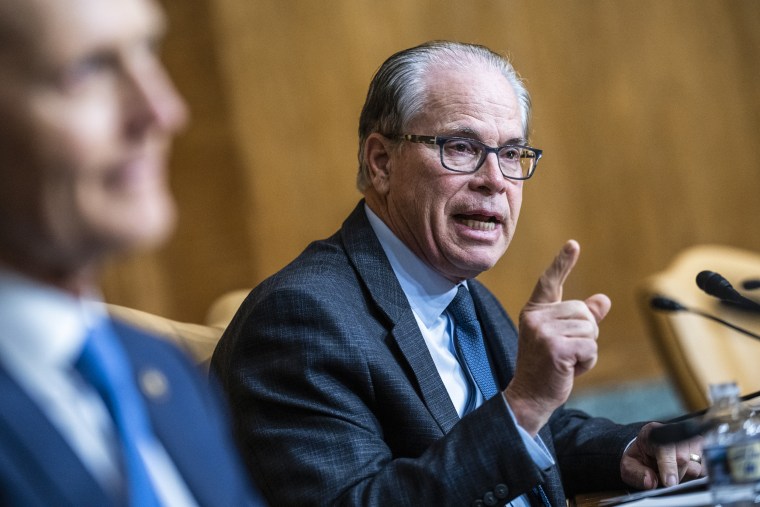
“It seems to be something that would seem to make sense,” he said while walking to a Senate vote.
Sen. Ted Cruz, R-Texas, said in a statement that Democrats should focus on prosecuting criminals and “those with serious mental illness,” rather than “undermining the rights of law-abiding citizens by creating a national gun registry.”
Sen. Kirsten Gillibrand, D-N.Y., who co-sponsored the Democrats’ doomed bill with Sen. Patrick Leahy of Vermont, said that’s not what members of their party are seeking.
“All this would do is bring the ATF into the 21st century and allow them to search the data they already have quickly,” she said in an interview.
The rise of gun control
The birth of modern day gun control came in the wake of two assassinations that rocked America.
The killings of civil rights leader Martin Luther King Jr. and Sen. Robert F. Kennedy led to the passage of the Gun Control Act of 1968, which required gun dealers to get a federal license to operate and also made them write down the names of people buying their weapons.
Since its establishment in 1972, the ATF has been tasked with tracing firearms used in crimes. But in 1986, then-President Ronald Reagan, under pressure from the gun lobby, signed a law that prohibited federal law enforcement from using “any system of registration” of firearms, firearm owners or firearm sales.
Troppman said that when he joined the center during the mid-1990s, staff would convert paper gun records into microfilm. Nowadays, tracing center employees use high-powered scanners to input the documents onto computers.
But they must walk a fine line when using 21st century technology in order to avoid running afoul of federal restrictions.
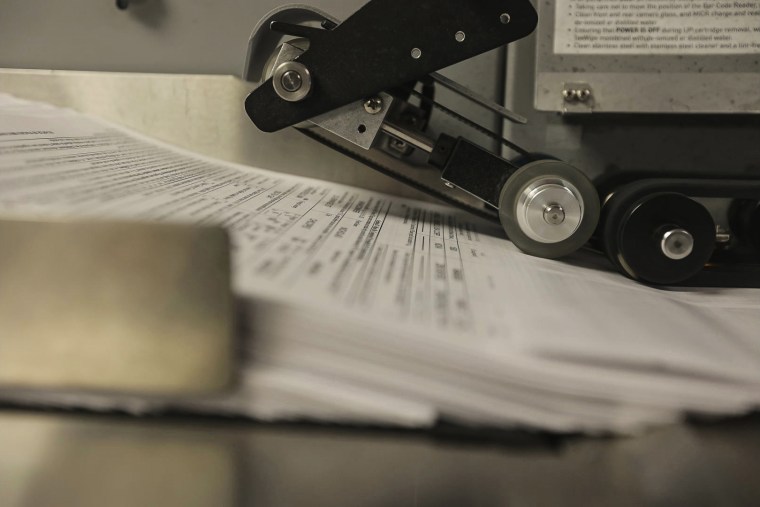
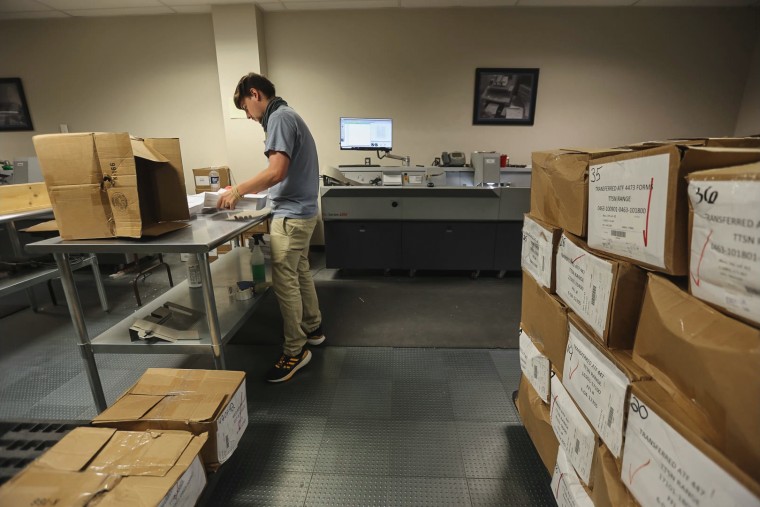
If the gun shop records are in an Excel file or another electronic format, the data extraction specialists are called in to make screenshots. Despite having access to more than 900 million scanned records, the ATF can’t look up gun owners or shops by name. When a trace comes in, investigators have to scroll through hundreds of pages of screenshots to find the gun information.
The trace requests now pour in at an unprecedented rate, thanks to an online portal called eTrace. The system allows local law enforcement agencies to file trace requests with just a few keystrokes, while the ATF investigators must scroll through hundreds of pages of screenshots to find the information needed to solve crimes.
“It is stupid. It is outrageous. And I blame Congress,” Leahy said in an interview, referring to the two-week wait time on routine gun traces.
While most take up to 14 days to complete, expedited searches are usually done for homicides and mass shootings, including on the AR-15-style weapon that was used to kill seven people at a July Fourth parade in Highland Park, Illinois.
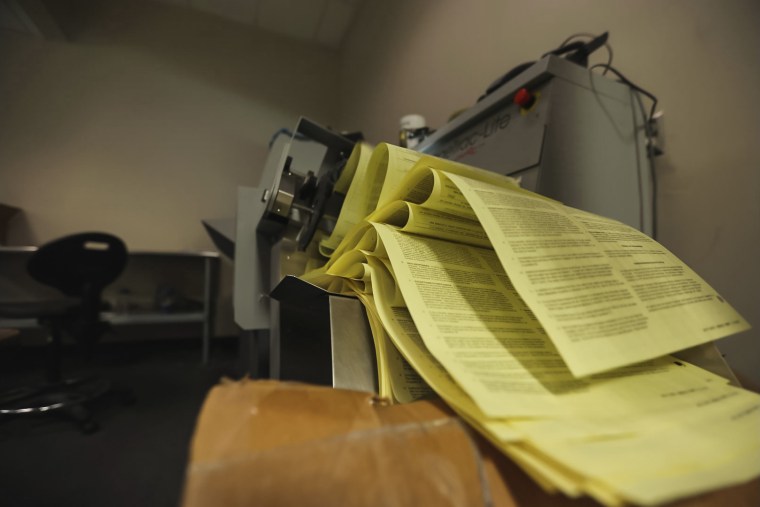
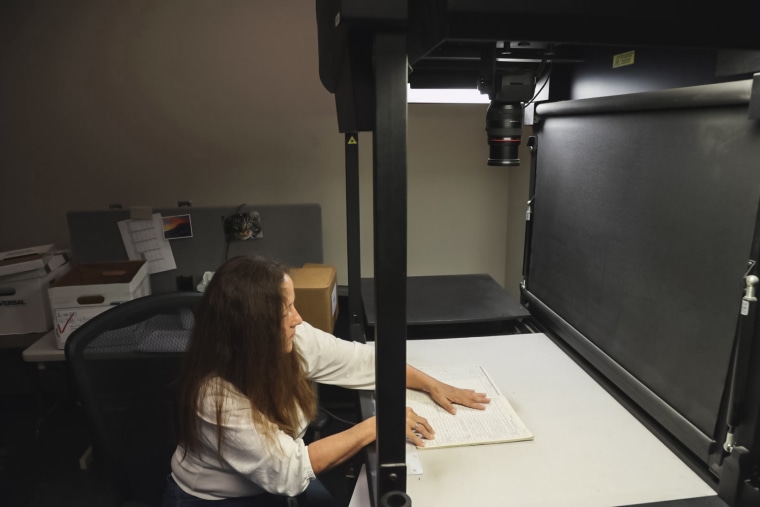
According to the U.S. Justice Department, 83% of “urgent requests” are completed within 48 hours.
The ATF is flooded with a record number of trace requests at a time when it’s facing a serious staffing shortage. The agency had about 80 federal employees assigned to the tracing center in the 1990s. It now has roughly 55.
In order to keep the nation’s gun trace effort afloat, the ATF relies on hundreds of contract workers, assigning them to organize and scan the millions of gun records that flood the facility each year.
If the agency stopped receiving records today, Troppman said, it would take about 14 months to clear the backlog. The work ahead is on full display at the ATF’s West Virginia facility, which looks like a time capsule from the era that birthed MTV.
Inside the National Tracing Center
On a recent Thursday, a gray-haired woman sat hunched over a pile of gun purchasing forms from 2013, thumbing for clues. Across from her, a young man clawed through box after box fishing for the one document that might reveal who owns the weapon found at a recent crime scene.
"Despite what people think, it’s still a manual process, regardless of what technology is out there," Troppman said.
The ATF often has little trouble tracking the first few legs of a firearm’s journey from factory to wholesaler. More than 30 gun manufacturers, distributors and importers came up with a workaround to speed up gun traces since, unlike the ATF, they can keep electronic databases.
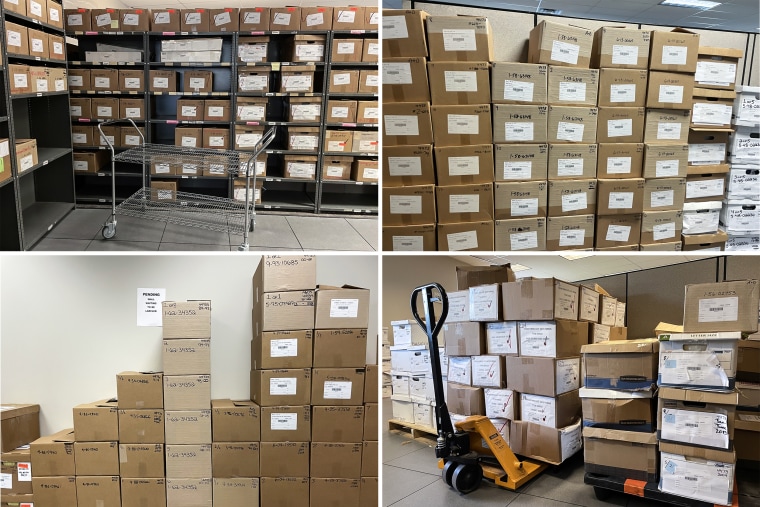
The companies participate in an online program that allows ATF analysts to quickly search a gun’s serial number detailing when the weapon changes hands between licensed dealers. But the digital trail doesn’t reach beyond a specific retailer and doesn’t contain information about an individual person who ends up buying the gun.
When a gun store is open, it’s a fairly straight path to connect the rest of a firearm’s purchase history. The ATF reaches out to the gun dealer requesting the name of the person who bought the weapon. But if the dealer is no longer in business, its sales records will end up buried somewhere at the Martinsburg facility, forcing workers to comb through the boxes and boxes of documents.
Every month, the National Tracing Center receives about 7 million pages of mostly gun sale records from shuttered businesses.
“It’s just a very cumbersome process that doesn’t need to be cumbersome,” said Lindsay Nichols, federal policy director with the Giffords Law Center to Prevent Gun Violence. “We could do a lot to reduce gun violence without a full-scale gun registry.”
But opposition to such a registry is fierce.
“If you’re talking about a national database for firearm traces, you’re also talking about listing every gun owner by name on that database,” said Mark Oliva, lead spokesman at the National Shooting Sports Foundation, a firearms trade association with a lobbying arm that almost exclusively backs Republican candidates. “We’ve seen abuses of that.”

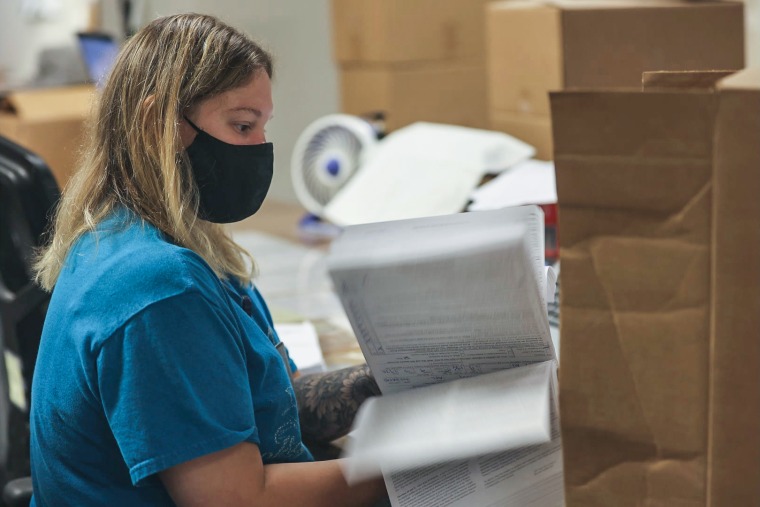
Unauthorized releases of gun owner information are rare but they do happen.
In late June, the California attorney general admitted that the state accidentally released online the names, addresses and other personal information of thousands of people who had applied for a concealed firearm permit within a 10-year period. The list, which included thousands of entries, was live for less than 24 hours. California Attorney General Rob Bonta said his office is investigating how the mistake occurred.
Firearms advocates point to European history and the vicissitudes of American politics to explain why they fear that any bulk collection of firearm purchasers’ names could eventually lead to mass disarmament. Citing Nazi Germany where Jews were targeted and forced to give up their weapons, some Second Amendment scholars argue a regime change in American government could lead to similar outcomes.
“I think registries are a nonstarter. Period,” said Mark W. Smith, a Second Amendment historian and author. “If you have a gun registry that lists all in one place, who are the gun owners and what guns they have, you make it a lot easier for a government to seize the guns and disarm Americans.”
“We never ever, ever want to live in a country with a disarmed population,” he said.
More guns on the streets
Louisville, Kentucky, has battled record-high homicide counts back to back since the pandemic, and Police Chief Erika Shields isn’t shy about railing against congressional inaction.
“When you’re out there and you’re fighting violent crime, and you’re looking to your federal partners to help, and the agency is purposely being obstructed from operating at the level that they can, it’s very frustrating,” said Shields, who also sits on the board of the Major Cities Chiefs Association.
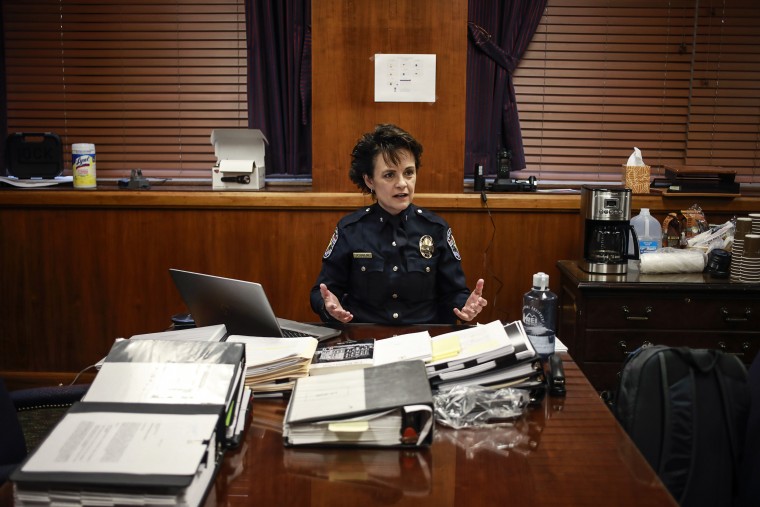
Since the U.S. bans the use of a gun registry, it’s hard to know how many firearms are circulating in Louisville and in cities across the country.
But with the available data, it’s clear that the nation has undergone a weapons boom. ATF statistics show the number of firearms manufactured in the U.S. rose from about 4 million in 2000 to more than 11 million in 2020. Since the pandemic, the number of people undergoing background checks for gun purchases jumped by about a third, topping 38 million checks in 2021, according to the FBI.
“There has to be a middle ground,” said Chief Johnny Jennings of the Charlotte-Mecklenburg Police Department in North Carolina. “We have to protect our citizens and we have to protect the most vulnerable people in our society.”


